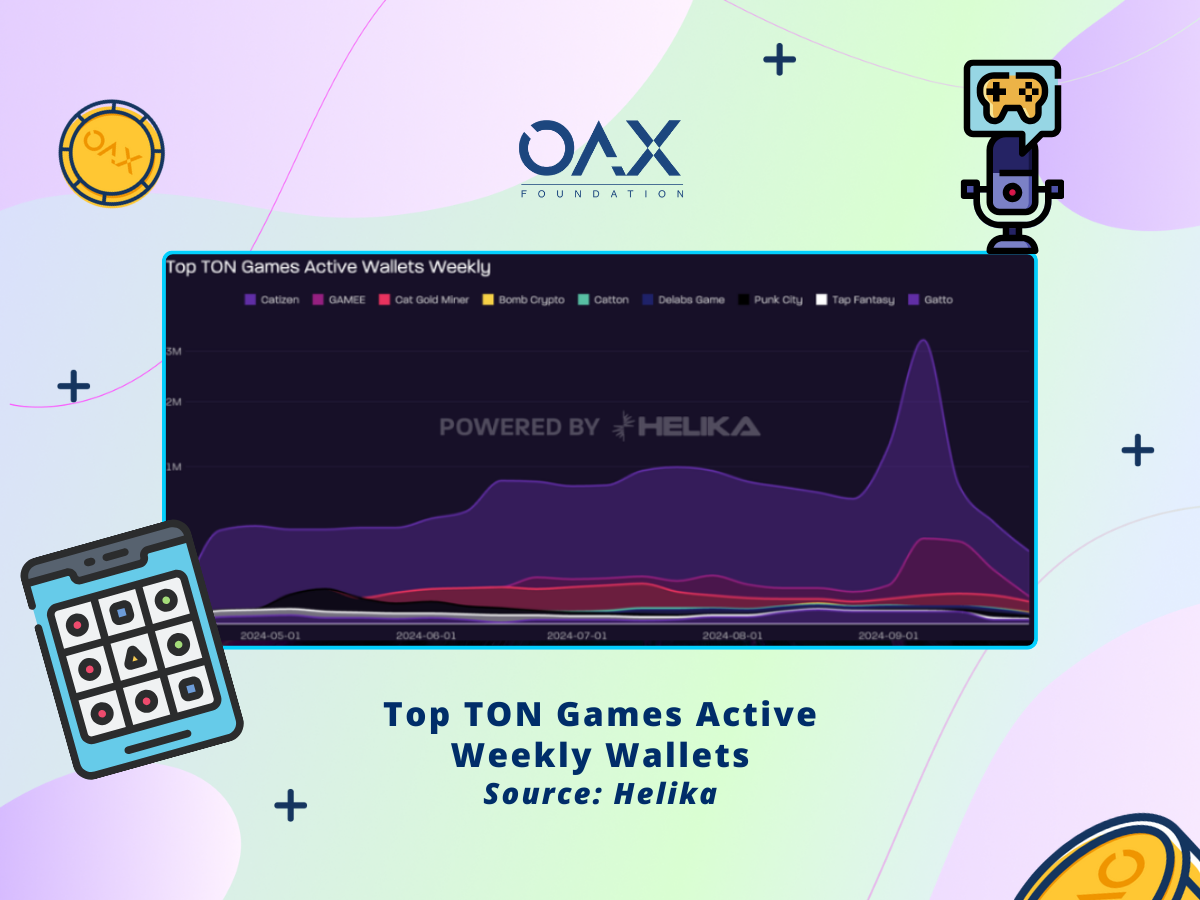
Driving Adoption in Crypto: “Gaming Traction”
The OAX Foundation was pleased to have attended a series of exciting Blockchain events in October and gaming was one of the heavily discussed topics across the board on driving adoption. While this is not a new narrative, we aim to give you an update on where we are with Web3 gaming and Metaverse since the last hype cycle – a sector that is believed to be the gateway and catalyst to drive user engagement on-chain.
The State of Web3 Gaming
Despite over $9 billion invested in Web3 gaming since 2015, the sector is experiencing a downturn, with gaming tokens down as much as 90% from their all-time highs. Retail investors have been diverting their attention and funds towards memecoins, reflecting a shift in interest dynamics. This environment of uncertainty raises concerns about the sustainability of various GameFi ecosystems. For instance, while initiatives like airdrops seek to incentivize user engagement, they often lead to inflated tokenomics where the value proposition for players diminishes over time.
As the crypto landscape evolves, onboarding new users has become increasingly crucial. Current Web3 applications lag significantly behind Web2 counterparts in terms of user engagement, leaving a predominantly crypto-native community. Major blockchain players are stepping in to lower barriers to entry, with initiatives like Coinbase’s Base and South Korean firms Kakao and Naver’s Kaia aimed at enhancing accessibility from an infrastructure standpoint.
Closing the Builders Gap
From building improved infrastructure to onboard non-Web3 users, to developing new mobile hardware, and inviting AAA studios and esports tournaments to enhance GameFi engagement, although not short of builders, we have yet to see these elements come together.
The GameFi space has primarily focused on the financial aspects, attracting a niche Web3 audience rather than the broader community of gamers who prioritize gameplay. This is where high-quality game studios play a crucial role, as exemplified by the recent launch of Gunzilla Games’ Off the Grid, which has garnered attention as a genuine AAA Web3 title.

Launched in early access on October 8, 2023, Off the Grid achieved a staggering 900,000 daily active users (DAUs) shortly after launch. This success signifies a potential turning point for Web3 gaming, demonstrating that high-quality games can attract significant player bases.
While major blockchain companies like Solana have also announced their plans for a gaming handheld device, the Solana Gen 1 which will be powered by the Solana blockchain, the focus on platform is another missing piece of the puzzle that makes Web3 games more accessible for non-Web3 gamers around the globe.

Challenges Ahead: A Web2 Problem
Having AAA studio building in Web3 is one thing, being able to produce a successful game in the genre is another. The highly competitive and saturated gaming space has already been a challenge for traditional game studios for decades, the chance of building a successful game is slim among a sea of game developers. While Off the Grid has made a strong debut, maintaining user interest will be challenging, especially given examples like The Finals, which launched with high initial engagement but quickly faded. The crucial question remains is can the game retain players in a market where many titles struggle to maintain engagement.
On-Chain Pros and Cons
Additionally, the sustainability of GameFi token economies poses a significant hurdle. The challenge is to create a compelling model where players feel incentivized to spend money, as opposed to merely seeking profits. Successful GameFi projects must either implement zero-sum tokenomics or foster a spending culture driven by genuine enjoyment of the game itself. Innovations like token “sinks” could help manage inflation, but they require a captivating gameplay experience to motivate player investment. If this is done right, could this new layer of incentive be the magic ingredient to solving the Web2 problem?
Poster Child for Gaming: TON Protocol
Amidst these challenges, the TON Protocol, in partnership with Telegram, is making bold strides. With a goal to onboard 500 million users by 2028, TON seeks to leverage Telegram’s 900 million monthly active users (MAUs) to create a seamless entry point into crypto. By integrating native wallets and enabling peer-to-peer payments, TON is positioned to become a mobile-first blockchain, crucial for driving mass adoption.

The success of TON’s GameFi initiatives, particularly projects like Notcoin and Hamster Kombat, showcases early momentum. Notcoin’s tap-to-earn model has attracted over 40 million users, while Hamster Kombat has reportedly reached 200 million users, illustrating the potential for engaging, social gaming experiences that can drive adoption and retention.

Closing Thoughts
Despite the current turbulence in the crypto and gaming sectors, the outlook remains hopeful. The emergence of AAA titles is a good start, along with new Web3 gaming platforms and TON’s innovative onboarding strategy could herald a new era of adoption in crypto gaming. While challenges remain—especially regarding user retention and sustainable economic models—the integration of blockchain technology within gaming presents unprecedented opportunities for gamers, developers, and investors alike. The OAX Foundation is positive to see builders innovating across the spectrum, leaving no stones unturned. As the industry continues to evolve, successful launches and robust game economies will be key to unlocking new audiences and advancing the entire Web3 ecosystem.
Disclaimer: The above is an opinion piece written by an authorized author, but in no way represents the official standpoint of OAX Foundation Limited, nor should it be meant to serve as investment advice.


